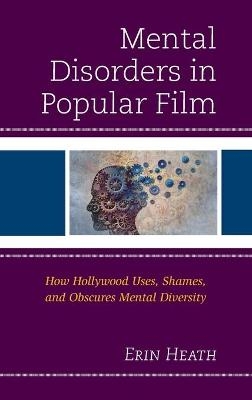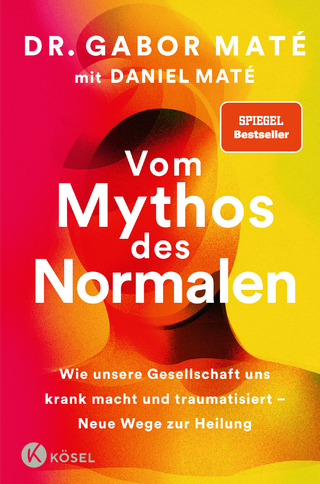
Mental Disorders in Popular Film
How Hollywood Uses, Shames, and Obscures Mental Diversity
Seiten
2019
Lexington Books (Verlag)
978-1-4985-2171-0 (ISBN)
Lexington Books (Verlag)
978-1-4985-2171-0 (ISBN)
Mental Disorders in Popular Film discusses popular cinematic representations of characters with mental disorders or diversity, contextualizing these works in the Hollywood machine. These films demonstrate the many ways that Hollywood has used people with mental disorders as excuses to control or oppress diverse people and ideas.
Contemporary Hollywood films commonly use mental disorders as a magnifier by which social, political, or economic problems become enlarged in order to critique societal conditions. Cinema has a long history of amplifying human emotion or experience for dramatic effect. The heightened representations of people with mental disorder often elide one category of literal truths for the benefit of different moral or emotional reasons. With films like Fight Club, The Silence of the Lambs, The Dark Knight, and Black Swan, this book address characters identified by film or media as people who are crazy, mentally ill, developmentally delayed, insane, have autism spectrum disorder, associative personality disorder, or who have other mental disorders. Despite the vast array of differences in people’s experiences, film often marginalizes people with mental disorders in ways that make it important to be inclusive of these varied experiences. These characters also commonly become subject to the structures of hierarchy and control that actual people with mental disorders encounter. Cinematic patterns of control and oppression heavily influence the narratives of those considered crazy by the outside world.
Contemporary Hollywood films commonly use mental disorders as a magnifier by which social, political, or economic problems become enlarged in order to critique societal conditions. Cinema has a long history of amplifying human emotion or experience for dramatic effect. The heightened representations of people with mental disorder often elide one category of literal truths for the benefit of different moral or emotional reasons. With films like Fight Club, The Silence of the Lambs, The Dark Knight, and Black Swan, this book address characters identified by film or media as people who are crazy, mentally ill, developmentally delayed, insane, have autism spectrum disorder, associative personality disorder, or who have other mental disorders. Despite the vast array of differences in people’s experiences, film often marginalizes people with mental disorders in ways that make it important to be inclusive of these varied experiences. These characters also commonly become subject to the structures of hierarchy and control that actual people with mental disorders encounter. Cinematic patterns of control and oppression heavily influence the narratives of those considered crazy by the outside world.
Erin Heath is associate professor in the School of Languages and Literature at Wayland Baptist University.
1. Gender and Reality in Fight Club and Black Swan
2. Villainizing and Psychopaths in The Dark Knight and The Silence of the Lambs
3. Cognitive Theory and Autism in Rain Man and Mary and Max
4. Disability Theory and Race in Radio and The Soloist
5. Institutionalization and Gaslighting in Girl Interrupted and 12 Monkeys
| Erscheinungsdatum | 10.05.2021 |
|---|---|
| Verlagsort | Lanham, MD |
| Sprache | englisch |
| Maße | 161 x 232 mm |
| Gewicht | 354 g |
| Themenwelt | Geisteswissenschaften ► Psychologie ► Persönlichkeitsstörungen |
| Medizin / Pharmazie ► Gesundheitswesen | |
| Sozialwissenschaften ► Kommunikation / Medien ► Medienwissenschaft | |
| ISBN-10 | 1-4985-2171-1 / 1498521711 |
| ISBN-13 | 978-1-4985-2171-0 / 9781498521710 |
| Zustand | Neuware |
| Informationen gemäß Produktsicherheitsverordnung (GPSR) | |
| Haben Sie eine Frage zum Produkt? |
Mehr entdecken
aus dem Bereich
aus dem Bereich
Buch | Softcover (2023)
Urban & Fischer in Elsevier (Verlag)
CHF 76,95
wie unsere Gesellschaft uns krank macht und traumatisiert – neue Wege …
Buch | Hardcover (2023)
Kösel (Verlag)
CHF 39,95


